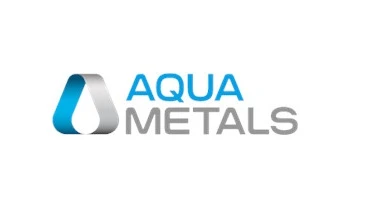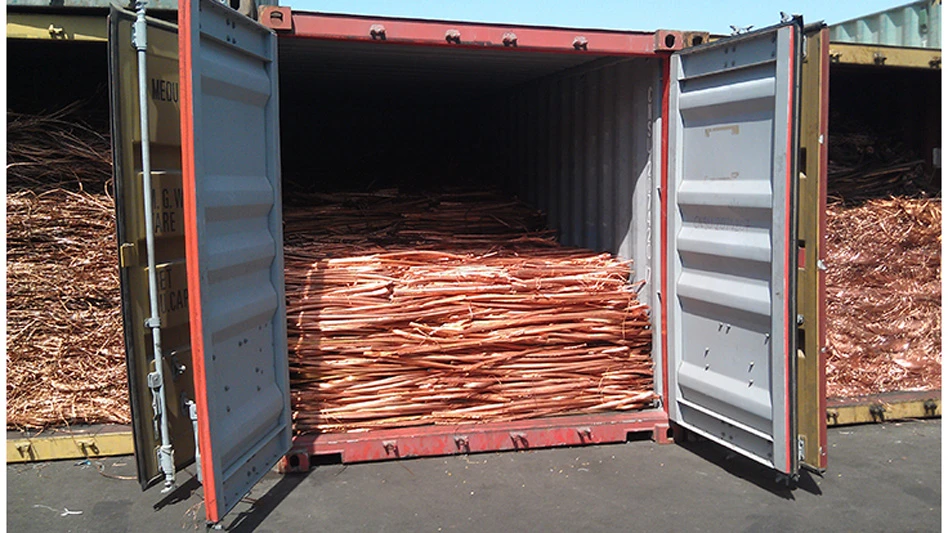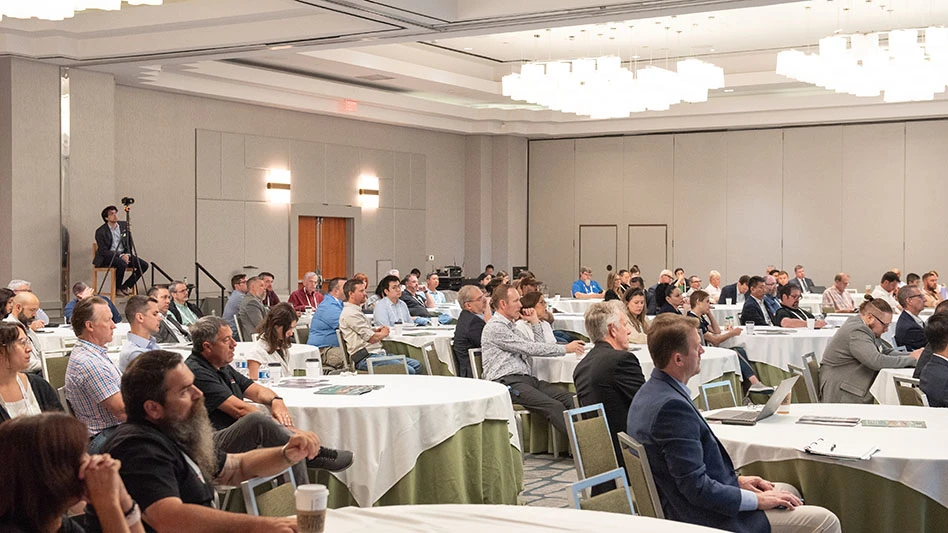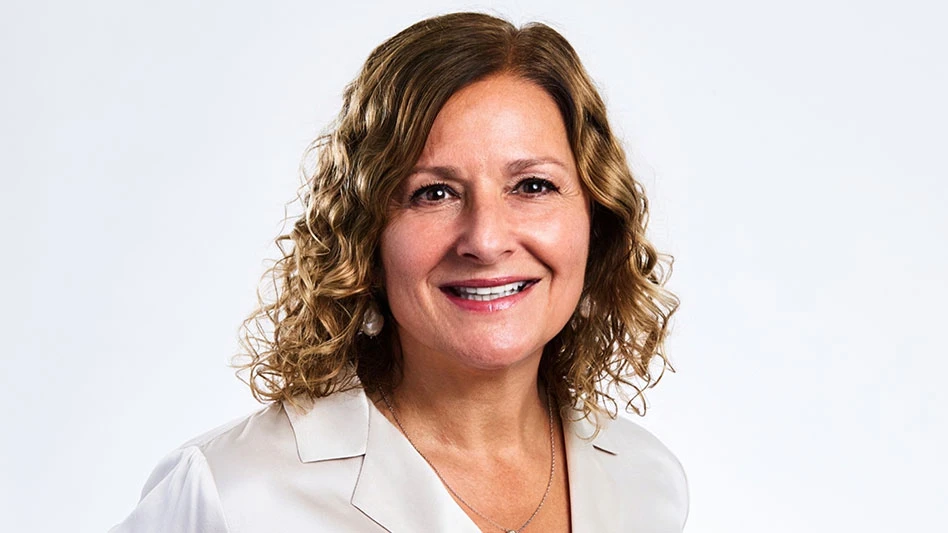United Recycling Industries, West Chicago, Ill., has mapped out a comprehensive approach to electronics recycling.

Robert Glavin concedes that his company’s new multi-million dollar capital investment is a roll of the dice. The electronics shredding system now in place at United Recycling Industries’ West Chicago, Ill., location could help the company become the dominant player in North American electronics recycling—or it could be a regrettable footnote in the history of the electronics recycling segment.
Fortunately, the dice appear to be loaded in United’s favor, thanks largely to due diligence performed by Robert Glavin and other key United personnel, including Robert’s sons Jim and Mark, his daughter Amanda and his wife Linda Post.
CAPTURING THE STREAM
For the past several years, the fact that vast amounts of electronic scrap are being generated annually has been well documented. Many entrepreneurs have responded to the news accounts, with several different business plans adopted.
Initially, some business owners pursued strictly the precious metals that can be mined from within this stream of equipment. Others have chosen refurbishment and re-sale of whole units as their focus, while another set of entrepreneurs has set its sights on harvesting as many re-saleable chips and components as can be found in the stream of pre-owned equipment.
United Recycling has been successful in several of these segments, although its roots lie in the precious metals refining sector of the recycling industry.
More than 50 years ago, United Refining was founded as a refiner of secondary gold, silver, platinum and palladium. As the electronics recycling industry grew in prominence in the previous two decades, United Refining decided to expand its business to grow with the evolving trends.
“In the late 1980s, we started losing precious metal materials, and we found out how other companies were buying computers for the value of the integrated circuits,” says Bob.
Both to continue sourcing precious metals and to develop its own electronic recycling business, the company started its Universal Integrated Circuits division to procure material at a more upstream stage.
The United Recycling Services and United Technology Services subsidiaries, meanwhile, were established to work with Fortune 1000 companies to offer an audited, environmentally sound method of disposing of their off-lease computers, peripherals, copying machines, fax machines and other office equipment.
Until its recent reorganization, United Refining and Universal Integrated Circuits were two of four operating companies within United Recycling. Even though United has consolidated these operating units into two subsidiaries (an electronics group and a precious metals group), it will continue to offer refining and component re-use services in addition to its new shredding operations.
The company’s established market segments have helped it capture the sizable stream of materials it will need to feed its West Chicago shredding plant. A visitor to the staging area of the shredder will see an inventory of copying machines, fax machines and computer equipment ready to be shredded.
But the company is by no means switching to a shredding only operation. At its West Chicago complex, United employees continue to grade out equipment for possible re-sale and harvest chips and other components that have a viable re-sale market waiting for them.
A MARKET LOOKING FOR A DRIVER
It is not yet clear whether electronics recycling as an industry can be sustained entirely from the profits to be made from the secondary commodities it yields. In many ways, the expense and environmental risks of disposal are driving the increased electronics recycling activity rather than a pure profit motive.
Like many other electronics recyclers, United charges what amounts to a tipping fee to handle materials generated both by corporate clients and municipalities that collect electronic scrap.
For large generators of this material, it is often a cost-effective choice upfront to work with United rather than disposing of the materials with a conventional solid waste company. When the risks of improper disposal of lead and other materials in a landfill are considered, then the Glavins believe the United option becomes the clear choice.
United Recycling believes it has created an advantage as a provider of electronics recycling services because of its ability to provide proof to auditors of its recycling abilities and options from re-use to final shredding.
The fact that the entire process takes place in the U.S. also has provided an advantage, as global environmental groups have raised concerns about the electronics recycling methods used by some overseas companies.
“With more and more of our customers, it’s in their contracts that we will not export components or whole units,” says Bob Glavin. “More customers want total destruction of the obsolete equipment, not material ending up on the gray market.”
The shredder operation provides a United customer with the chance to see its old units shredded before their eyes, if the company chooses, so that any future security or environmental issues cannot be raised.
“We’re trying to ensure a domestic solution for e-scrap,” says Jim Glavin. “And in the U.S., it has got to be done mechanically, not manually.”
He believes that if the electronic scrap export market becomes more restrictive, the United shredder will prove its worth in just a few years. “This shredder has not necessarily been installed to serve the market of 2002, but we think it’s ideal for the market of 2005 or 2007.”
About 10 percent of the funding for the shredding plant came from a grant from the State of Illinois, which hopes to see United add jobs as a regional recycler of electronic equipment.
The electronics recycling market could be pushed not just by export restrictions, but also by landfill restrictions.
Individual states are beginning to enact landfill bans or other restrictions against portions of the electronics stream. At the same time, many of these same states are making certain that the handling of this equipment is not restricted for recyclers.
Subsequently, municipalities and other solid waste jurisdictions have begun collecting electronic scrap for recycling, although what they’ll need to do first is make certain they can ship what is collected to a recycler who will actually recycle all of what is collected—not just certain re-saleable portions of the stream.
“Communities understand it is their job to collect [the obsolete electronics stream] and keep it out of landfills,” Bob remarks. “Community take-back will grow as a system of collection, but right now, they don’t always know what to do with what is collected.”
|
A Total Approach |
|
Traditional scrap recyclers and zero waste recycle-at-all-costs advocates can each find something to like about the operations of United Recycling Industries, West Chicago, Ill. With their background in precious metals refining, the Glavin family that operates United Recycling has its eyes firmly on the bottom line of the balance sheet. The harvesting of metals from the stream of diverse equipment is one of the foremost tasks for United, and the company’s officers are familiar with the volatile metals market. “When we designed our shredding system, we followed the scrap industry’s model,” says president and CEO Bob Glavin. At the same time, United practices re-use methods in addition to seeking raw secondary commodities. Profit is often the motive for this, as with the re-sale of monitors and computer chips. The re-use activities of United, combined with the high-yield shredding operation, allows the company to claim a 97 percent recycling rate for material it brings in. The stubborn three percent includes polystyrene, bubble wrap and other plastics. |
TEARING IT UP
The Glavins believe an agreement to allow their company to handle collected electronic scrap offers corporations and municipalities the best assurance that materials will be recycled or disposed of properly.
The addition of the shredder plant moves United Recycling from being a partial solution to one that offers a 97 percent recycling rate with assurances that sensitive, stored information will not survive the recycling process.
Within the 300,000 square foot West Chicago complex operated by United Recycling are several different operating units.
Initially, computers and other machines enter a “triage” area, where their next move is determined. Some machines arrive with explicit instructions ordering hard drive erasure. Up to 60 monitors can be tested at the same time to see if they have re-sale or re-use value. (According to Jim Glavin, about 30 percent of incoming monitors are re-sold, while the rest are disassembled and shredded later.)
Integrated circuits (IC) are still pulled and sorted by type. In a separate part of the building, printed circuit boards are placed on heated trays that melt the adhesives holding the chips in place. Chips are then harvested by technicians and sorted by type for re-sale.
“Circuit boards may have up to $50 in re-salable chips, but just pennies in precious metals content, so this process is an important step,” says Jim Glavin.
Eric Smith, a United Recycling vice president in charge of overseeing IC recycling operations, says that some 65 percent of the chips harvested are sold to brokers while the other 35 percent are sold directly by United division Universal Integrated Circuits.
The established market for used chips allows Smith and United to take positions on some types of chips, either releasing them into the wider market or holding them for a time when the price may be higher.
|
The Family Touch |
|
|
The circuit boards still contain enough precious metal to be of interest to refiners. “We ship 200 tons of circuit board scrap per year to refineries,” notes Bob.
In the case of larger office equipment, most notably copying machines, some parts are removed before they head to the shredder. Toner cartridges are pulled and sold to that separately established re-charging market, and many times recyclable office paper is found in copier and fax machine trays, notes Jim Glavin.
The shredding plant itself is more accurately described as plural “shredders” instead of a singular shredder. A primary shredder, a secondary shredder and a granulator all get turns at downsizing material as it works its way via several conveyors through the system. There are several steps involved in the system, which was designed and installed by Shred-Tech, Cambridge, Ontario, Canada.
1) An infeed conveyor moves material to the primary shredder made by Shred-Tech. The primary shredder reduces fed material to pieces four inches in size or smaller.
2) Several picking stations are located along the conveyor leaving the primary shredder. Large plastic pieces are often pulled from this stream to be baled later, as are distinguishable metal pieces such as stainless steel platens from fax and copying machines. Away from the shredding line, the company operates two Marathon balers that compress the mixed plastic as well as circuit boards and the paper grades produced at the plant.
3) Another machine from Shred-Tech serves as the secondary shredder, reducing scrap fragments to a size of two inches or smaller.
4) The fragments are now small enough to head to a granulator supplied by Shred-Tech, from which plastic flakes and metal chips emerge in sizes less than one-quarter of an inch in size.
5) In the post-granulating stage, a belt magnet attracts iron-bearing scrap, while shaker tables separate plastics from nonferrous metals, and an eddy current further sorts out the nonferrous stream.
A control room reminiscent of those found at auto shredding plants allows an operator to gauge the volume of material being shredded, control the input of material to the shredder and shut down operations if necessary.
What comes out of the shredding system is a variety of secondary commodities with fluctuating values. The older equipment running through the shredder is yielding decent amounts of metal, say the Glavins: 70 percent from copying machines, 61 percent from computer tower units, and 45 percent from fax machines.
“Right now, our streams are steel scrap, copper, a clean aluminum, a zinc/aluminum mix and mixed plastics with circuit boards,” says Jim Glavin.
The production of the secondary plastic resins is far from a profit center, notes Jim, with the company’s mixed plastic shred and commingled bales providing just pennies per pound in returns. “That will be the single most challenging market,” he admits. But the company will continue to seek plastic end markets to help ensure customers that their material is indeed being recycled.
With a low-yield plastics market and an unpredictable metals market on the sell side, the Glavins note that the collection or tipping fee they charge to accept material will likely remain an important part of the equation.
WATCH AND LEARN
The Glavins are proud of the shredding plant that they have put together, but will wait to see what kind of returns it yields before promising to build additional facilities. “I don’t see us duplicating these facilities,” says Bob. “We’re already bringing material in from far away sources. Corporations ship it in from all over, and communities from states like Iowa and Missouri are beginning to find us.”
The company is not strictly limited as to what it can bring in. “We can take anything that plugs in: power tools, clock radios, laboratory equipment and small appliances,” says Bob.
The company has added Lauren Roman, who has been involved in several different aspects of the electronics recycling industry for the past ten years, as a New Jersey-based vice president to help secure more contracts for electronic scrap material from throughout the U.S.
If the material keeps flowing in and marketable commodities are being produced from the shredding process, recyclers from throughout the continent may be looking at United’s West Chicago plant as a model to be followed in the emerging electronics scrap industry. The author is editor of Recycling Today.
|
Computer Recyclers to Meet |
|
In 2001, United Recycling Industries became one of the first Certified Electronics Recyclers under a program offered by the International Association of Electronics Recycling (IAER), Albany, N.Y. That organization is one of two associations convening at the third annual Electronics Recycling Summit, taking place May 6 to May 9 in San Francisco. The four-day series of events is co-sponsored by IAER and the Computer Society Technical Committee on Electronics and the Environment of the Institute of Electrical and Electronic Engineers (IEEE). The Summit will offer sessions on the progress of its focus teams as well as all of the participating organizations involved in electronics recycling – and this year will also include a special breakout program. Guest speakers from Ford Motor Co., the California Integrated Waste Management Board (CIWMB) and electronic products maker Canon have all been scheduled. Exhibits, tutorials, panel sessions, tours and meetings are also part of the Summit and an accompanying event, the International Symposium on Electronics and the Environment (ISEE). An advance look at the program, plus conference registration and hotel reservation forms, are available at the IAER’s Web site, www.iaer.org. |

Explore the April 2002 Issue
Check out more from this issue and find your next story to read.
Latest from Recycling Today
- USTR announces phased measures designed to address China’s shipbuilding dominance
- APR, RecyClass release partnership progress report
- Clearpoint Recycling, Enviroo sign PET supply contract
- Invista expanding ISCC Plus certification program
- Redwood partnership targets recycling of medium-format batteries
- Enfinite forms Hazardous & Specialty Waste Management Council
- Combined DRS, EPR legislation introduced in Rhode Island
- Eureka Recycling starts up newly upgraded MRF
 Although it has grown to more than 100 employees, United Recycling Industries, West Chicago, Ill., remains a family business. Members of the Glavin family who help run United Recycling include: President and CEO Robert J. Glavin (third from left); Controller Linda Post (wife of Robert Glavin, second from left); Vice President Jim Glavin, who has spearheaded the shredder plant efforts (far right).; Vice President Mark Glavin, who operates the United Refining and Smelting Co. in Franklin Park, Ill. (far left); and Amanda Glavin, who overseas environmental, safety and regulatory compliance (second from right).
Although it has grown to more than 100 employees, United Recycling Industries, West Chicago, Ill., remains a family business. Members of the Glavin family who help run United Recycling include: President and CEO Robert J. Glavin (third from left); Controller Linda Post (wife of Robert Glavin, second from left); Vice President Jim Glavin, who has spearheaded the shredder plant efforts (far right).; Vice President Mark Glavin, who operates the United Refining and Smelting Co. in Franklin Park, Ill. (far left); and Amanda Glavin, who overseas environmental, safety and regulatory compliance (second from right).




